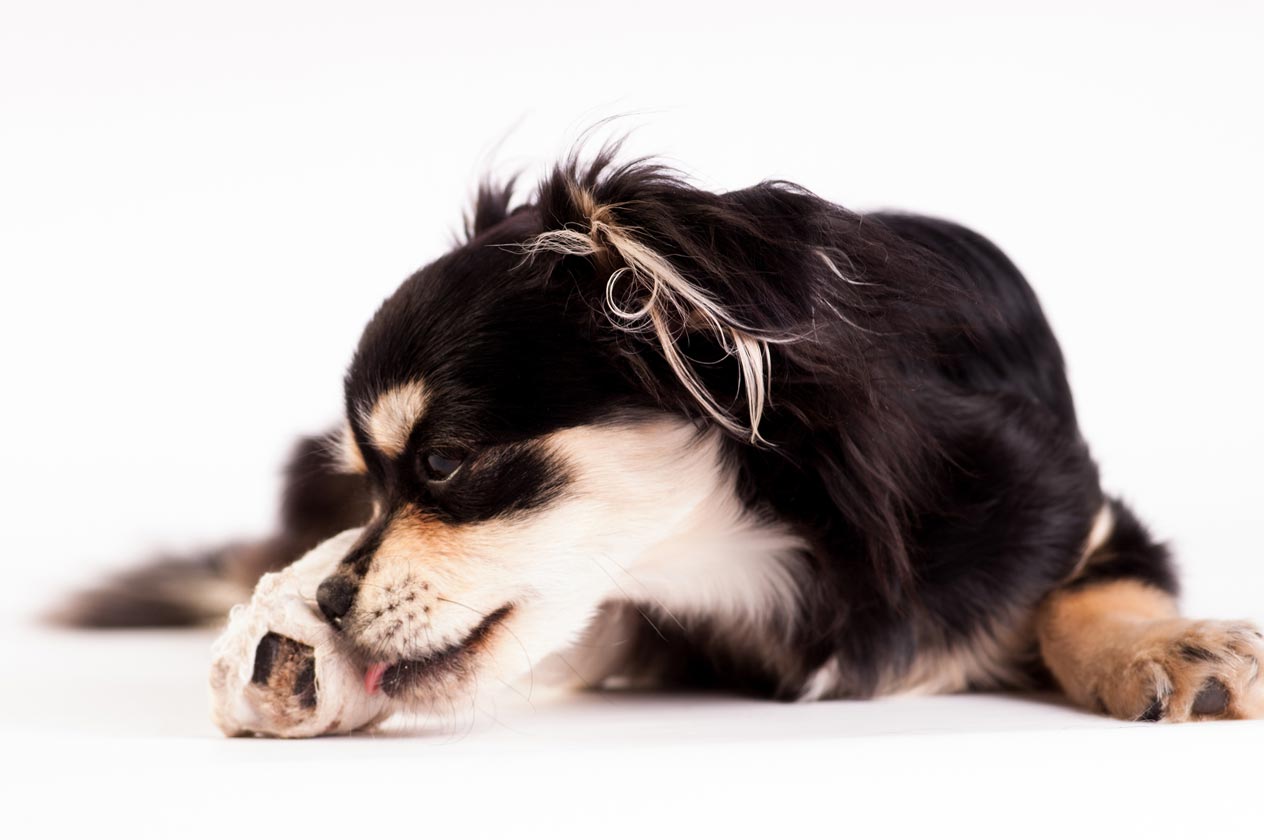Signs of Yeast Infections in Dogs

A yeast infection is an uncomfortable, stinky condition that affects dogs' skin. Yeast organisms are fungus, and they live on the skin all the time. However, when something disrupts the normal function of the skin, the yeast can overgrow, and that's when the trouble starts. Malassezia species are the most common yeast type to cause skin infections in dogs.
Signs of Canine Yeast Infections
Signs that your dog might be suffering from a yeast infection include:
- Change in skin color of an area of skin. Pink and red are the colors most commonly noted in the early stages of the condition. However, when a dog has a yeast infection chronically, the affected skin often begins to turn gray and then black.
- Change in skin texture. Skin that's suffering from a yeast infection often feels greasy. As the condition becomes chronic, the affected skin thickens and feels a bit like leather.
- Flakiness. Some dogs show flakiness of an area of skin when they have a yeast infection. That can look like dandruff.
- Scratching and excessive licking. These are often among the first signs that pet owners notice when their dog has a yeast infection. The dog might appear to be itchier generally or may focus on a specific area of the body, licking and scratching it more than usual. The ears are commonly affected by yeast infections, so ear scratching might indicate a problem. A dog might also show itchiness by rubbing body parts along the floor, ground, or furniture.
-
Swollen and warm skin. When an area of a dog's skin has yeast overgrowth, it will often appear puffy or swollen and might be warmer than usual when we touch it.
- Foul odor from the skin. Yeast infections produce an abnormal odor, and dogs suffering from them are often stinky. If your dog has a bad odor that isn't relieved by a bath, it might be an infection. Many people think yeast infections on dogs' skin smell like Doritos or Cheetos, but that isn't a very reliable way to diagnose yeast. However, it probably does indicate some type of infection, especially if your dog doesn't usually smell that way.
- Foul odor from the mouth. Dogs with yeast infections on their skin might develop a foul odor emanating from their mouth as well as from the affected skin. That's due to the dog licking at the infected area.
- Hair loss. Yeast infections in dogs often cause hair loss which could be general or specific to a small area depending on how widespread the infection is.
- Discoloration of fur. This happens in areas where the dog licks excessively and is especially common in light-colored dogs.
Treatment of Yeast Infections in Dogs
Treatment of your dog's yeast infection relies on proper diagnosis. Your veterinarian might do an ear cytology, skin cytology, skin culture, ear culture, skin scraping, or other testing to determine what is going on. If an abundance of yeast is found on some of these tests without other pathogens, a yeast infection will probably be diagnosed.
Then, the treatment will depend on the severity of the infection and where on the body it is located. Treatments might include:
- Oral anti-yeast medications.
- Topical anti-yeast medicine.
- Medicated baths.
- Ear drops with anti-yeast medication.
Remember, there is often an underlying condition allowing or triggering the overgrowth of yeast on a dog's skin that becomes a yeast infection. Some of these conditions include:
- Auto-immune diseases.
- Allergies.
- Too much moisture sitting on the skin.
- Bacterial infection already present in that area of the skin.
- Diabetes.
The underlying cause of the yeast infection needs to be diagnosed and treated along with the infection itself to ensure it goes away and stays gone.
You May Also Like These Articles:
Why Is Some of My Dog's Skin Turning Black?
My Dog Has a Lump: What Do I Do?
Dealing With Canine Scratching and Licking
Culture and Sensitivity Skin Test in Dogs
Disclaimer: This website is not intended to replace professional consultation, diagnosis, or treatment by a licensed veterinarian. If you require any veterinary related advice, contact your veterinarian promptly. Information at DogHealth.com is exclusively of a general reference nature. Do not disregard veterinary advice or delay treatment as a result of accessing information at this site. Just Answer is an external service not affiliated with DogHealth.com.
Notice: Ask-a-Vet is an affiliated service for those who wish to speak with a veterinary professional about their pet's specific condition. Initially, a bot will ask questions to determine the general nature of your concern. Then, you will be transferred to a human. There is a charge for the service if you choose to connect to a veterinarian. Ask-a-Vet is not manned by the staff or owners of DogHealth.com, and the advice given should not delay or replace a visit to your veterinarian.



